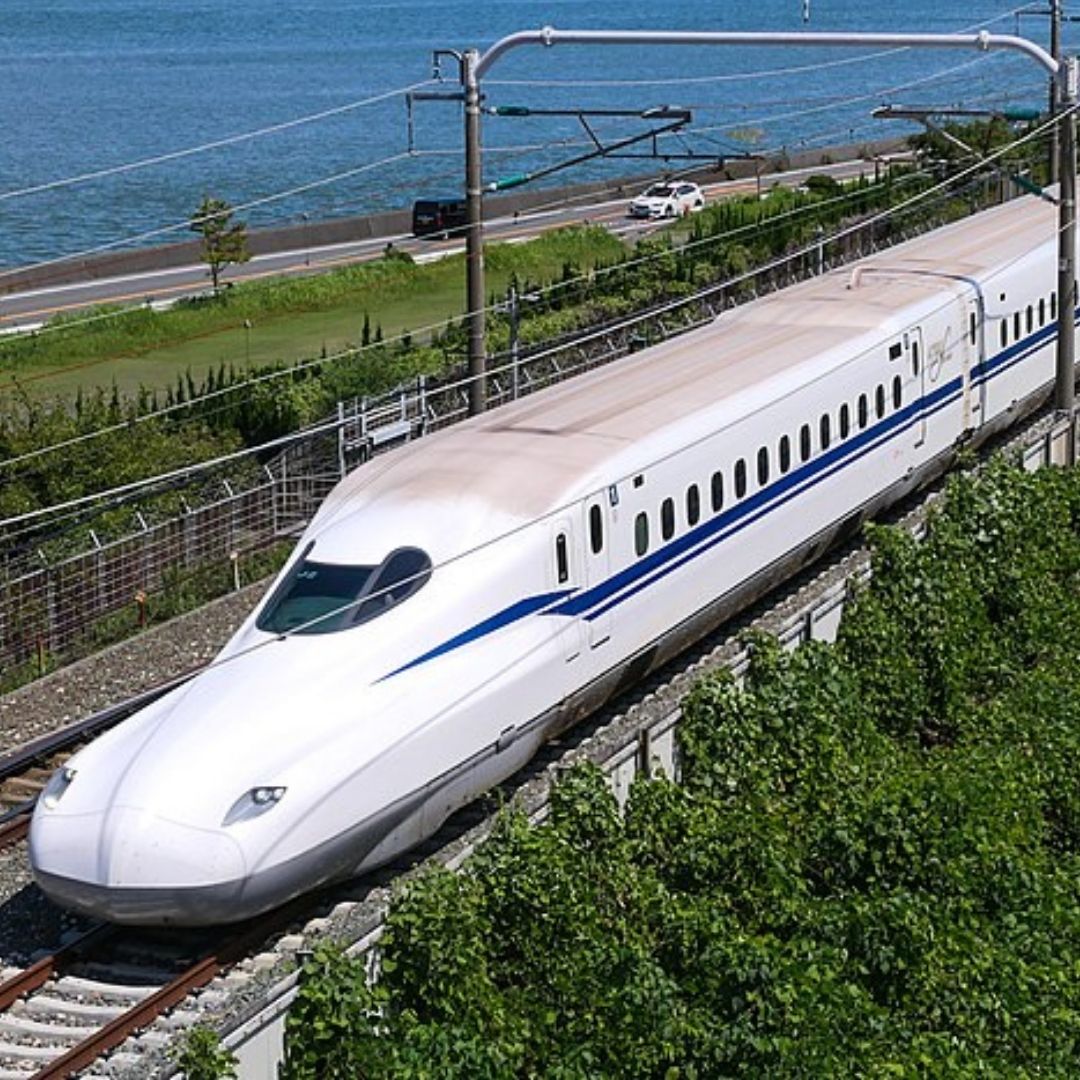
Image Credits: Wikipedia
From Punctuality To Super Cleanliness, Things That Make Japanese Trains Among The Best In The World
Others/World, 18 April 2022 12:17 PM GMT
Editor : Shiva Chaudhary |
A post-graduate in Journalism and Mass Communication with relevant skills, specialising in content editing & writing. I believe in the precise dissemination of information based on facts to the public.
Creatives : Tashafi Nazir
For most people, journalism sounds hectic and chaotic. For her, it's a passion she has been chasing for years. With an extensive media background, Tashafi believes in putting efforts on presenting a simple incident in the most interesting way.
Railroads in Japan go back 140 years. Over this time, an impressive amount of know-how has been accumulated to ensure smooth-running railways. This helped to design a system that today is considered one of the best in the world.
Rail transport in Japan is a significant means of travelling for commuters, especially for mass and high-speed travel between major cities and for commuter transport in urban areas. It is used relatively little for freight transport, accounting for just 0.84 per cent of goods movement. The privatised network is highly efficient, requiring few subsidies and running with extreme punctuality.
Railways are the essential means of passenger transportation in Japan, maintaining this status since the late 19th century. Government policy promoted railways as an efficient transportation system for a nation that lacks fossil fuels and is nearly entirely dependent on imports.
Railroads in Japan go back 140 years. Over this time, an impressive amount of know-how has been accumulated to ensure smooth-running railways. This helped to design a system that today is considered one of the best in the world.
Japanese Trains Are The Most Punctual
Japan's train system is legendary for its punctuality. Though crowded during rush hour, the rail networks of the country's three largest metropolitan areas – Tokyo, Nagoya, and Osaka – are perhaps the most efficient in the world. Japan's flagship high-speed line, the Tokaido Shinkansen, has operated for almost half a century without a single derailment or collision. In 2007, its average departure delay was a mere 18 seconds along its 320-mile route.
In Japan, the average high-speed bullet train arrives at its final stop just 54 seconds behind schedule, including delays caused by uncontrollable factors like natural disasters. If a Japanese train is five minutes late or more, its commuters are issued with a certificate. The passengers can show this to their boss or teacher as an excuse for being late, according to one BBC report.
Safest Rail Systems
Japan's Shinkansen network is one of the safest rail systems globally, with zero passenger fatalities since bullet trains started operating in 1964, and accidents of any kind are reassuringly rare.
According to the 2017 annual report of the Central Japan Railway Company, an average of 365 trains run each day on the line. This means that trains travelling at some of the top speeds globally are running every three to six minutes, which is the same operational pace as the passenger trains in the capital city Tokyo. They carry an average of around 452,000 passengers. Despite the train frequency and passenger volume, the line has not experienced any passenger fatalities from accidents like collisions, derailing, or fire, during its entire history.
Synchronised Team Of Efficient Cleaners
Not only Japanese trains are famous for punctuality and reliability, it's also guaranteed to be quiet and incredibly clean.
It takes only seven minutes for a highly synchronised team of mega-efficient cleaners to clean each train. The teams are positioned on the platform as the train pulls in to avoid wasting a second. No corners are cut as they clear and wipe down each car with incredible speed and efficiency.
Every day, at Tokyo station's four platforms, more than 300 "Shinkansens" (bullet trains) arrive and depart, with average intervals of roughly four minutes. "TESSEI", a subsidiary of Japan Railway, is in charge of cleaning these bullet trains, making them meticulously clean and ready for the following passengers. Completing the task of cleaning these 17-carriage bullet trains in under 7 minutes, TESSEI has time and again attracted attention from the international media.
World's Busiest Train Station
A never-ending labyrinth of shopping strips, underground tunnels and seas of moving bodies, Shinjuku Station is where seasoned locals get lost regularly. The reason being it is the world's busiest train station. Servicing nearly 3.6 million passengers daily, the station is so bustling that in 2016 the East Japan Railway company launched a new app specifically designed to get around this single station.
Once people the madness of Shinjuku, they witness the train network at its most hectic. However, there are several other busy stations located across the nation. Out of the 51 most trafficked stations globally, Japan is home to 45 of them, proving once again that this is a country that runs on trains. The top five stations are Shinjuku, Shibuya, Ikebukuro, Umeda (in Osaka), and Yokohama.
Longest Running Upside Down Train
According to a Japanese travel website, about an hour outside of Tokyo, one will find Chiba, a beachy prefecture often overlooked by people, but filled with fascinating attractions. It is also home to the Chiba Urban Monorail System, which is both retro and futuristic at the same time. Here, the train hangs from the rails and runs along a 15.2 kilometre (9.4 miles) track, making it the most extended suspended rail system in the world. It is almost impossible to walk under this train without feeling like it's going to drop on top of you.
Female Only Carriages In Metro
When you have trains and stations as packed as Japan's, there will always be opportunistic individuals who take advantage of the close quarters to fulfil their undesirable goals. As a way to prevent miscreants on the packed trains, the metro system implemented women's only carriages during rush hours (mornings and evenings during workdays).
Automatic Brake For Earthquakes
It is no secret that Japan is one of the most earthquake-prone countries in the world. But thanks to the ingenious design and the country's meticulous eye for detail, it's also one of the most earthquake-safe places? The houses are built on special movable bases, while the rail network has been fitted with a unique safety mechanism. As Shinkansens shoot across the country at eye-watering speeds, the central system that connects them all can freeze every single one of them in their tracks at the first sign of an earthquake.
World's Longest Train Bridge
Known as the Seto Ohashi Bridge, this structure is a string of connected bridges that connect Okayama Prefecture on Honshu to Kagawa Prefecture on Shikoku Island. Stretching 9,368 meters (5.8 miles) long, the bridge is mainly used for cars and has space for a Shinkansen track.
Also Read: Remembering Social Reformer 'Maharshi Karve', Who Set Up India's First University For Women
 All section
All section














